Welcome to the A-Z of Featured Green Travel Destinations – with tips on where to visit, stay, what to experience and how to travel sustainably.
X: Xingu National Park, Brazil

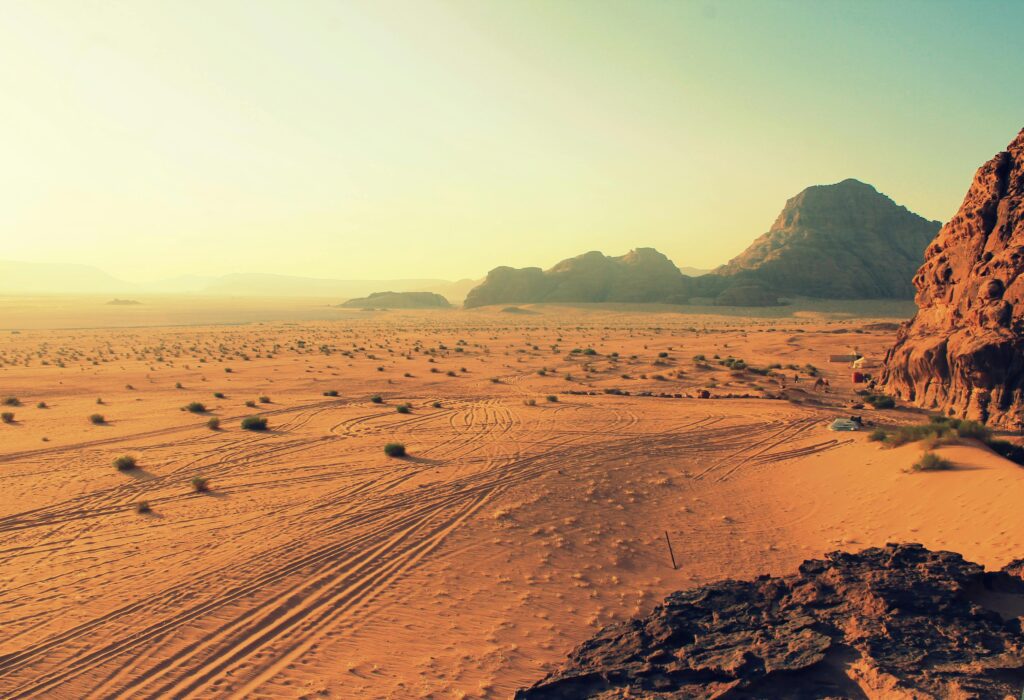


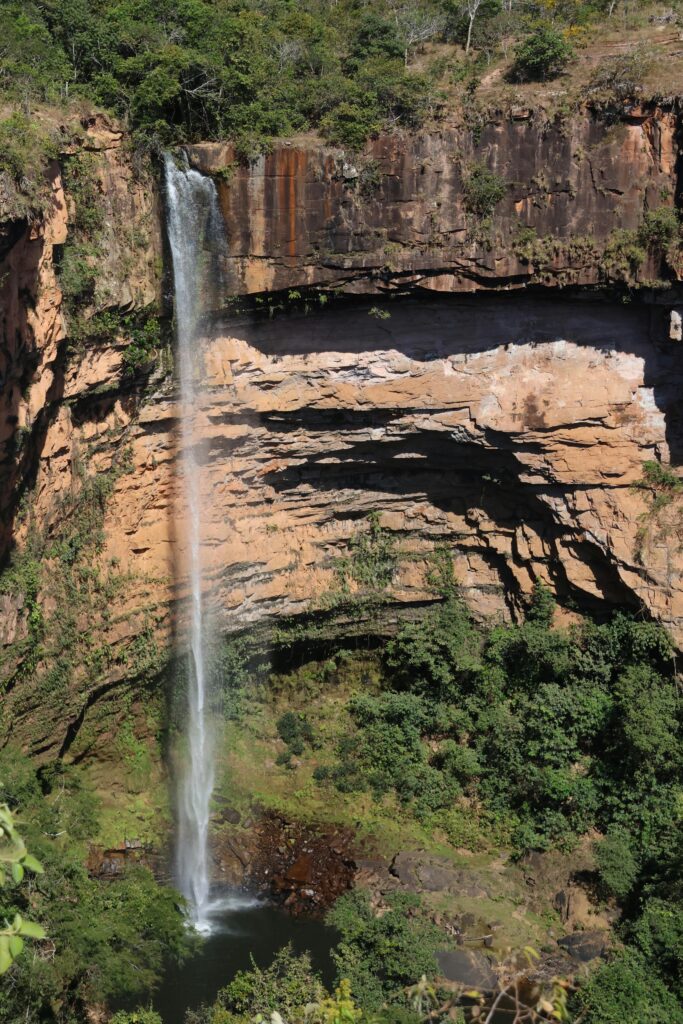
V: Victoria, Australia
Green Travel Guide to Victoria, Australia
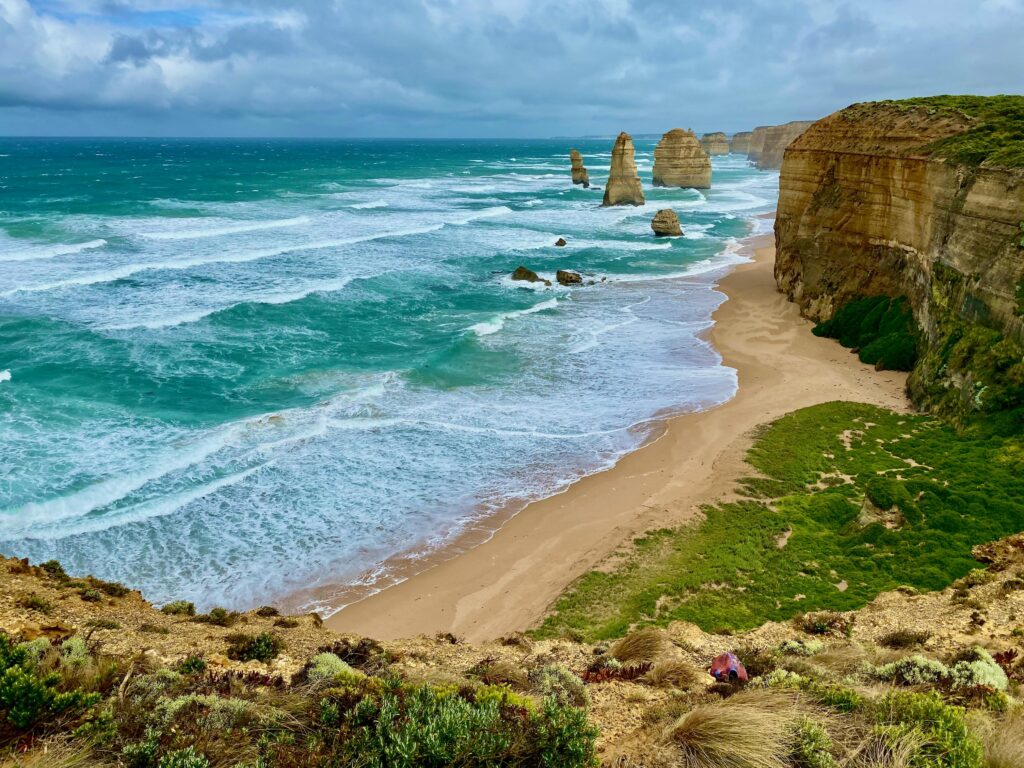
Victoria, a southeastern state in Australia, is home to a stunning range of landscapes, from lush rainforests and rugged mountains to pristine beaches and rolling vineyards. It’s a region committed to sustainability, with eco-tourism initiatives that highlight its natural beauty, rich wildlife, and conservation efforts. Whether you’re exploring the famous Great Ocean Road, hiking in the Grampians, or discovering the serene beauty of Phillip Island, Victoria offers numerous opportunities for green travel.
Here’s a Green Travel Destination Guide to Victoria, showcasing its sustainable tourism practices, green accommodations, eco-conscious activities, and tips on how to minimise your environmental impact while experiencing the best of this diverse state.
Getting to Victoria: Sustainable Travel Options
By Air:
The main gateway to Victoria is Melbourne Airport, which connects to international destinations and other parts of Australia. To reduce your carbon footprint, consider opting for airlines with strong sustainability programs, including carbon offset options. Once in Melbourne, there are several sustainable transport options to get around the city and explore the state.
By Train:
Victoria has a well-developed train network that connects Melbourne with regional destinations, offering an eco-friendly alternative to driving. The V/Line regional train service is a comfortable and scenic way to travel, with stops in towns like Ballarat, Geelong, and Bendigo.
Eco-tip: Train travel within Victoria is a low-carbon alternative to domestic flights and allows you to relax while enjoying the beautiful landscapes.
By Bus:
For budget-conscious travellers, long-distance buses provide another eco-friendly option for traveling through Victoria. Buses like Greyhound Australia offer routes between Melbourne and various regional destinations, and they typically have lower emissions per person compared to cars.
By Bicycle:
Victoria is increasingly becoming a bicycle-friendly state, with extensive cycling routes in both urban and rural areas. Melbourne has a network of bike lanes, and the Great Ocean Road and Gippsland offer scenic cycling routes for the more adventurous.
Eco-tip: Rent a bicycle for city tours or longer bike trips to explore Victoria in an eco-conscious way.
Sustainable Transportation in Victoria
Victoria promotes sustainable mobility throughout its cities and regional areas, making it easier for travellers to reduce their environmental footprint.
Public Transportation:
Melbourne has an extensive public transport network, including trains, buses, and trams. The city’s Myki card system makes it easy for tourists to use public transport, which is a great way to reduce emissions while exploring the city.
Eco-tip: Use Melbourne’s public transport for city exploration to avoid the environmental costs of driving.
Electric Vehicles (EVs):
In recent years, there’s been an increase in the availability of electric car rentals in Melbourne and regional Victoria, as well as EV charging stations across the state. Opting for an electric vehicle can significantly reduce your travel emissions.
Eco-tip: Rent an electric car to travel sustainably and explore the state’s natural wonders.
Walking and Cycling:
Melbourne, as well as regional towns, offers great walking paths, making it easy to explore sustainably on foot. From the Yarra River to Royal Botanic Gardens, there’s much to discover on foot in the city. Many areas, including the Grampians and Phillip Island, also offer hiking and cycling routes.
Eco-tip: Explore nature trails or bike tours in the Grampians or around Phillip Island to connect with nature in an eco-friendly way.
Sustainable Accommodations in Victoria
Victoria offers a wide range of eco-friendly accommodations, from luxury eco-resorts to budget-conscious stays. Many of these places focus on sustainability through water and energy conservation, recycling programs, and eco-friendly building practices.
1. Ecolodge at the Great Ocean Road
Located along the iconic Great Ocean Road, this eco-lodge offers a sustainable stay surrounded by nature. The lodge uses solar panels, rainwater harvesting systems, and local, organic food in its restaurant. It’s the perfect base to explore nearby 12 Apostles and Otway National Park.
2. Grampians Eco-Lodge
Nestled in the Grampians National Park, this eco-lodge is designed with sustainability in mind. The lodge offers energy-efficient accommodations, with practices like composting, solar energy, and sustainable water usage. Guests can enjoy the breathtaking natural scenery, as well as eco-friendly guided hikes.
3. Phillip Island Eco Retreat
The Phillip Island Eco Retreat offers luxurious yet sustainable accommodations, with a focus on minimising environmental impact. Located near the Phillip Island Nature Park, the retreat is committed to reducing waste, conserving water, and using renewable energy. It’s a great place to observe wildlife, such as penguins and koalas, while supporting local conservation efforts.
4. The Ranges Eco-Luxury Lodge, Gippsland
The Ranges Eco-Luxury Lodge in Gippsland offers a more indulgent eco-stay. The lodge operates using sustainable practices like green energy, waste management, and locally sourced food. It’s a perfect place for nature lovers seeking luxury with minimal environmental impact.
Eco-Friendly Activities and Attractions in Victoria
Victoria offers a variety of activities that allow travellers to connect with nature in an eco-conscious manner.
1. Great Ocean Road
The Great Ocean Road is one of Victoria’s most iconic landmarks, offering stunning coastal views, rainforests, and wildlife. Travellers can take a guided eco-tour to learn about the region’s environmental significance and conservation efforts. You can also choose eco-friendly transport options such as electric buses or cycling.
Eco-tip: Join an eco-friendly tour to reduce your impact while learning about the area’s wildlife and conservation efforts.
2. Grampians National Park
With its rugged mountains, waterfalls, and diverse wildlife, Grampians National Park is a must-see for nature enthusiasts. Hiking and wildlife spotting are popular activities here, and visitors can choose eco-guides who employ the Leave No Trace philosophy.
Eco-tip: Opt for eco-tours or guided hikes that promote responsible tourism and support local conservation projects.
3. Phillip Island Nature Parks
Phillip Island is famous for its penguin parade, where visitors can watch little penguins return to shore in the evening. The island’s Nature Parks are dedicated to conservation, with programs focused on protecting local wildlife. Sustainable tourism practices are emphasised, including wildlife-friendly infrastructure and habitat restoration.
Eco-tip: Support sustainable wildlife tourism by visiting conservation-driven attractions like Phillip Island Nature Parks.
4. Wine Regions
Victoria is home to some of Australia’s best wine regions, including Yarra Valley and Macedon Ranges, both of which focus on sustainable wine production. Many wineries use organic and biodynamic farming methods, reducing their environmental impact. Take a sustainable wine tour to taste local produce while learning about green practices in viticulture.
Eco-tip: Choose wineries with organic or biodynamic certification and learn about their sustainable practices.
5. Wilsons Promontory National Park
Wilsons Promontory, or “The Prom,” is a popular eco-destination offering activities such as hiking, beachcombing, and wildlife watching. It’s known for its ecological diversity and is a great place to engage in responsible outdoor activities. The park has several eco-camping options for travellers looking to immerse themselves in nature.
Eco-tip: Explore the park through eco-friendly camping and guided eco-walks, and support local wildlife conservation initiatives.
Sustainable Dining and Shopping in Victoria
Victoria is home to a wide range of sustainable dining and shopping options, many of which focus on locally sourced, organic, and ethically produced goods.
1. Farm-to-Table Dining
Many restaurants in Melbourne and regional Victoria embrace the farm-to-table philosophy, sourcing food directly from local farms. Popular sustainable dining options include Attica in Melbourne and The Age of Fishes in the Yarra Valley, both of which focus on organic, seasonal ingredients.
2. Farmers’ Markets
Victoria hosts several farmers’ markets, including the Collingwood Farmers’ Market in Melbourne and the Gippsland Farmers’ Market, where you can buy organic produce, artisan foods, and handmade goods directly from local farmers and artisans.
3. Eco-Friendly Shopping
Melbourne and regional Victoria offer a range of eco-friendly stores, such as Miniml (zero-waste products) and The Social Studio (sustainable fashion), where you can shop for goods that promote sustainability.
Green Travel Tips for Victoria
- Choose eco-friendly transport options like public transport, bicycles, and electric vehicles.
- Support sustainable tourism operators that focus on environmental conservation and local community development.
- Stay in green-certified accommodations that use renewable energy and practice waste reduction.
- Minimise plastic waste by carrying reusable water bottles and shopping bags.
- Respect local wildlife and support conservation efforts in places like Phillip Island and Wilson’s Promontory.
Victoria as an Eco-Destination
Victoria offers a wealth of natural beauty, wildlife, and cultural heritage, and it’s making great strides in embracing eco-tourism and sustainable travel practices. From the majestic Great Ocean Road and the scenic Grampians to the penguin-filled shores of Phillip Island, this diverse state offers plenty of opportunities to connect with nature in a responsible way. By choosing eco-friendly transportation, accommodations, and activities, travellers can experience the best of Victoria while minimising their environmental impact.

W: Wadi Rum, Jordan
Green Travel Guide to Wadi Rum, Jordan

Wadi Rum, also known as the “Valley of the Moon,” is a vast desert wilderness located in southern Jordan. Famous for its dramatic sandstone mountains, deep canyons, and ancient rock inscriptions, Wadi Rum offers a unique, breathtaking landscape that has been the backdrop for numerous films and adventure seekers. For those seeking an eco-conscious adventure, Wadi Rum is an excellent destination due to its commitment to preserving its natural environment, promoting sustainable tourism, and supporting local Bedouin communities.
Here’s a Green Travel Destination Guide to Wadi Rum, highlighting its sustainable travel options, green accommodations, eco-tourism activities, and practical tips on how to enjoy the natural beauty of Wadi Rum while minimising your environmental impact.
Getting to Wadi Rum: Sustainable Travel Options
By Air
The nearest major airport to Wadi Rum is Queen Alia International Airport (AMM) in Amman, the capital of Jordan. From Amman, you can travel to Wadi Rum by bus, car, or private transport. While flying can be unavoidable for international travel, choosing flights with carbon offset programs can help mitigate environmental impact.
By Bus
A sustainable option to get from Amman to Wadi Rum is by public bus. The buses are affordable, and they offer a more eco-friendly way to travel than private cars. The journey takes around 4-5 hours, offering scenic views of the desert and surrounding landscapes.
Eco Tip: Use public transport instead of private cars to reduce carbon emissions during your journey to Wadi Rum.
By Car
If you prefer driving, consider renting an electric vehicle (EV) or a hybrid car if available in Jordan, or carpool with other travellers to reduce the number of vehicles on the road. Additionally, you can hire a local Bedouin guide to ensure a sustainable travel experience and gain insight into the region’s cultural heritage.
Sustainable Transportation in Wadi Rum
While exploring Wadi Rum, it’s important to minimise your environmental impact. The desert is pristine, and protecting its natural beauty is vital for future generations. Here are some sustainable transportation options to explore the area:
By Camel
Camel treks are one of the most eco-friendly ways to experience Wadi Rum’s majestic desert. The Bedouin people, who have lived in Wadi Rum for centuries, traditionally used camels for transportation, and they now offer guided camel tours through the desert. Not only does this experience connect you with the region’s culture, but it also ensures minimal disruption to the environment.
Eco Tip: Opt for eco-friendly and ethically-run camel treks over jeep tours, which are more fuel-intensive and potentially damaging to the ecosystem.
By Foot
Hiking is another excellent way to explore the Wadi Rum desert and its surroundings. There are a variety of hiking trails available that take you through canyons, up to scenic viewpoints, and into the heart of the desert. Walking on foot ensures that you leave minimal trace while allowing you to truly connect with the landscape.
Eco Tip: Go on guided walking tours with local Bedouins who use sustainable practices and deep knowledge of the desert ecosystem.
By 4×4 (with caution)
While 4×4 jeep tours are popular in Wadi Rum, they are not always the most environmentally friendly option. However, if you choose this mode of transportation, select a company that limits the number of vehicles in the desert at any given time and follows leave no trace principles. Some operators also use vehicles that run on low-emission fuel.
Eco Tip: If you choose a jeep tour, ensure the company practices responsible tourism by limiting vehicle numbers and promoting environmental awareness.
Sustainable Accommodations in Wadi Rum
Wadi Rum has a range of accommodations that focus on sustainability and provide a unique desert experience. Many eco-lodges and camps in the area focus on reducing their environmental footprint and support local Bedouin communities.
1. Eco-Camps
Several eco-camps have been established in Wadi Rum to cater to the growing demand for sustainable travel. These camps are built with local materials and designed to blend seamlessly with the desert environment. They typically rely on solar power, rainwater harvesting, and composting toilets to reduce their environmental impact.
Wadi Rum Bedouin Camp: This eco-friendly camp offers traditional Bedouin-style tents made from sustainable materials and runs on solar energy. The camp’s food is often locally sourced, and it offers eco-tours that highlight the region’s natural and cultural significance.
Eco Tip: Stay at eco-lodges or camps that use solar energy and natural building materials to support sustainable tourism and minimise environmental impact.
2. Bedouin Tents
For a more immersive experience, consider staying in traditional Bedouin tents that offer a glimpse into the nomadic lifestyle of the local people. Many Bedouin-run camps emphasise eco-friendly practices, such as using low-impact cooking methods, supporting local businesses, and encouraging wildlife conservation.
Eco Tip: Opt for Bedouin-run camps that prioritise local sourcing and contribute to community-based tourism.
Eco-Friendly Activities in Wadi Rum
Wadi Rum is rich in natural beauty and history, offering numerous opportunities to connect with nature while practicing sustainable tourism. Here are some activities to consider:
1. Desert Trekking and Hiking
Hiking through Wadi Rum allows you to explore its vast, untouched beauty while minimising your environmental impact. Many trails lead to stunning viewpoints, such as Jebel Khazali and Lawrence’s Spring. Trekking is an excellent way to witness the desert’s unique rock formations, desert plants, and wildlife.
Eco Tip: Stick to designated trails to avoid disturbing the natural landscape and support leave no trace principles.
2. Bedouin Cultural Experiences
Learn about the rich culture and traditions of the Bedouin people through sustainable cultural experiences. You can participate in traditional activities like bread-making, coffee preparation, and star-gazing, while supporting local communities and preserving their heritage.
Eco Tip: Support local Bedouin guides and cultural experiences that promote respect for the land and sustainable cultural practices.
3. Wildlife Watching
Wadi Rum is home to a variety of desert wildlife, including sand foxes, wild cats, and numerous bird species. Responsible wildlife watching is a fantastic way to appreciate the biodiversity of the region. Always ensure that you are maintaining a respectful distance and supporting ethical wildlife tourism.
Eco Tip: Join eco-friendly wildlife tours that respect the animals’ natural habitats and adhere to ethical wildlife-watching practices.
4. Stargazing
Due to its remote location, Wadi Rum offers some of the best stargazing opportunities in the world. The clear desert sky provides a spectacular view of the stars and planets, and many camps offer astronomy tours where you can learn about the night sky. Some operators even use low-light pollution techniques to minimise environmental impact.
Eco Tip: Participate in stargazing tours that focus on light pollution reduction and conservation efforts to protect the night sky.
Dining and Sustainable Food Practices in Wadi Rum
Many eco-camps and Bedouin communities offer meals made from local, organic ingredients, with a focus on sustainability and cultural heritage. Traditional Bedouin food such as zarb (slow-cooked lamb), hummus, salads, and flatbread is often prepared in a traditional manner, minimising waste and using locally sourced ingredients.
Eco Tip: Support local food producers and choose accommodations that use organic, locally sourced food to minimise the carbon footprint of your meals.
Green Travel Tips for Wadi Rum
- Use local guides: Engage with local Bedouin guides who follow sustainable practices and contribute to the community’s well-being.
- Minimise waste: Bring a reusable water bottle, avoid plastic waste, and ensure you leave no trash behind.
- Respect the land: Stick to marked paths and respect the desert’s fragile ecosystem by minimising your footprint.
- Support local businesses: Shop at local markets, stay in locally-owned eco-camps, and participate in community-based tourism initiatives.
Wadi Rum as an Eco-Destination
Wadi Rum offers an extraordinary natural environment, rich in history and culture, and is a fantastic destination for eco-conscious travellers. By staying in sustainable accommodations, using eco-friendly transport options, and engaging in responsible activities, you can enjoy this stunning desert landscape while preserving its beauty for future generations. Whether you’re trekking through the desert, learning about Bedouin traditions, or stargazing under the clear night sky, Wadi Rum provides a unique opportunity to connect with nature in an environmentally responsible way.

X: Xingu National Park, Brazil
Green Travel Guide to Xingu, Brazil

Xingu National Park is a significant and biodiverse region located in the heart of the Brazilian Amazon. Established in 1961, the park is not only one of the largest protected areas in Brazil but also a crucial sanctuary for indigenous cultures and wildlife. It spans over 27,000 square kilometres and is home to a vast array of ecosystems, from dense forests to wetlands and savannahs. The park is known for its diverse flora and fauna, including endangered species such as the jaguar and the giant river otter, as well as its deep cultural ties to various indigenous tribes.
As an eco-tourism destination, Xingu National Park offers an immersive experience that combines environmental conservation with cultural exchange, making it an ideal destination for travellers seeking sustainable, green travel experiences.
Getting to Xingu National Park: Sustainable Travel Options
By Air
The closest major city to Xingu National Park is Altamira, located in the state of Pará, Brazil. The easiest way to reach Xingu is by flying into Altamira Airport (ATM). From Altamira, visitors typically travel by private transport or local buses to access the park.
Eco Tip: Opt for flights with carbon offset programs and consider using public transport or shared transportation to reduce your environmental footprint.
By Boat
For those seeking a more sustainable and immersive way to travel, taking a boat trip along the Xingu River is a popular choice. This method allows you to explore the surrounding environment while minimising your impact on the land. The river is a major transportation route for local communities, and boat travel supports the sustainable livelihoods of local residents.
Eco Tip: Travel by boat to reduce carbon emissions, and seek out operators that prioritise eco-friendly vessels.
Sustainable Accommodations in Xingu National Park
Accommodations near Xingu National Park are typically focused on eco-lodges or indigenous-run camps that adhere to sustainable practices. These accommodations provide a unique opportunity to stay in close proximity to nature while supporting the local economy and respecting the traditional ways of life.
1. Indigenous Community-Based Tourism
One of the best ways to experience the authentic culture of the Xingu region is by staying in indigenous-run eco-lodges or villages. These lodges are managed by local tribes, and staying with them provides financial support for community-led conservation efforts. This type of tourism promotes cultural preservation, sustainable livelihoods, and environmental stewardship.
Eco Tip: Opt for indigenous-led tourism experiences that focus on cultural exchange and sustainable development.
2. Eco-Lodges and Camps
There are a few eco-lodges in the area that aim to minimise environmental impact by using solar energy, rainwater harvesting systems, and natural building materials. These lodges often incorporate local materials, employ local workers, and support the region’s sustainable development goals.
Eco Tip: Choose accommodations that are energy-efficient, promote local sourcing of food and supplies, and encourage low-impact activities for guests.
Sustainable Activities in Xingu National Park
Xingu National Park is home to many exciting and eco-friendly activities that promote environmental and cultural education. Here are some sustainable ways to experience the park:
1. Indigenous Cultural Tours
The park is home to a rich diversity of indigenous tribes, such as the Kayapo, Xikrin, and Kamaiura. Many indigenous communities offer guided tours that provide insight into their traditional way of life, including sustainable farming practices, hunting methods, and artisan crafts. These tours are a great way to support indigenous communities and learn about their efforts to preserve the environment.
Eco Tip: Always ensure that the tour is community-led and benefits the indigenous tribes economically and culturally.
2. Wildlife Watching
Xingu National Park is an important sanctuary for biodiversity, and wildlife watching is one of the highlights for eco-tourists. Visitors can explore the park’s various habitats, including forests, wetlands, and rivers, to see species such as jaguars, giant river otters, tapirs, and countless bird species. Responsible wildlife tours focus on ethical observation and support the park’s conservation efforts.
Eco Tip: Choose eco-friendly wildlife tours that emphasise low-impact observation and avoid disturbing the animals.
3. River Exploration
The Xingu River flows through the park, offering visitors the chance to explore the waterways by canoe or boat. The river is an essential lifeline for local communities and wildlife, and eco-tours along the river provide the opportunity to experience the Amazon from a different perspective. You can spot river dolphins, fish, and exotic birds while learning about the region’s water management practices.
Eco Tip: Opt for kayak or canoe tours that leave minimal environmental impact and follow sustainable boating practices.
4. Hiking and Nature Trails
Hiking is one of the best ways to explore the forest and its diverse ecosystems. The park has numerous nature trails that allow you to immerse yourself in the rainforest, view its diverse plant life, and discover how indigenous people have lived harmoniously with nature for centuries. Hiking tours are typically led by knowledgeable local guides who teach about the flora, fauna, and the park’s history.
Eco Tip: Stick to designated hiking trails and follow leave no trace principles to ensure minimal impact on the environment.
Supporting Local Communities and Conservation Efforts
Xingu National Park is not only a haven for biodiversity but also a focal point for indigenous land rights and sustainable development in Brazil. When visiting, you can contribute to these efforts in several ways:
1. Supporting Indigenous Land Rights
The indigenous tribes in and around Xingu National Park have fought hard for the protection of their land. By visiting the park and staying in community-run eco-lodges, travellers can directly support these communities and their land preservation efforts. Additionally, a portion of the proceeds from eco-tourism often goes towards environmental protection programs and education initiatives.
2. Conservation Contributions
Many eco-tourism operators in the region support conservation programs that focus on preserving the Amazon rainforest, protecting endangered species, and maintaining the integrity of the ecosystem. Some lodges even participate in reforestation efforts and support local wildlife rehabilitation projects.
Eco Tip: Choose tours and accommodations that contribute a portion of their profits to conservation and community development projects.
Dining and Sustainable Food Practices
The food you eat while staying in and around Xingu National Park is a reflection of the region’s sustainable and local sourcing practices. Many eco-lodges and indigenous camps serve organic, locally grown produce and traditional Amazonian dishes that have been cultivated using sustainable methods.
Eco Tip: Enjoy locally sourced food and avoid processed, imported products to support local agriculture and reduce your carbon footprint.
Green Travel Tips for Xingu National Park
- Travel Light: Limit the amount of waste and plastic you bring with you to ensure minimal environmental impact.
- Respect Local Culture: Understand and respect the traditions and customs of the indigenous tribes you interact with. Follow their guidelines for sustainable engagement.
- Stay on Marked Trails: When exploring the park, stick to established trails to protect the delicate ecosystems and avoid disturbing wildlife.
- Support Sustainable Operators: Choose tour operators and accommodations that prioritise sustainability, local community involvement, and environmental conservation.
Xingu National Park as an Eco-Destination
Xingu National Park is an incredible eco-destination where travellers can connect with nature and indigenous cultures in a way that promotes environmental sustainability and community development. By choosing eco-friendly activities, supporting local communities, and engaging in responsible tourism practices, you can help preserve the natural beauty of the Amazon and the traditions of its indigenous people for generations to come.

Y: Yellowstone, USA
Green Travel Guide to Yellowstone, USA
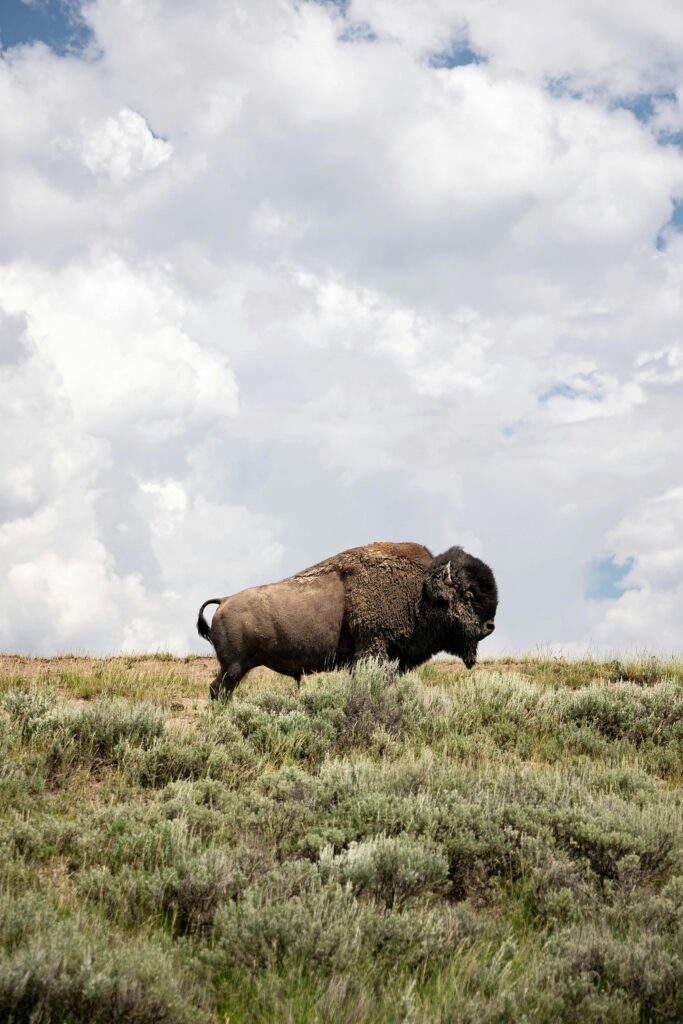
Yellowstone National Park, established in 1872, is not only the first national park in the world but also one of the most iconic and environmentally significant places in the United States. Known for its dramatic geothermal features like Old Faithful and the Grand Prismatic Spring, its rich wildlife, and vast wilderness, Yellowstone is a beacon of conservation and a symbol of natural preservation. The park spans over 2.2 million acres and straddles the borders of Wyoming, Montana, and Idaho, making it a diverse ecosystem for sustainable tourism.
For eco-conscious travellers, Yellowstone offers an opportunity to explore vast landscapes, engage in wildlife conservation efforts, and support sustainable tourism initiatives. Here’s a GreenTravel Destination Guide to Yellowstone, with recommendations on how to minimise your environmental impact while enjoying this natural wonder.
Getting to Yellowstone National Park: Sustainable Travel Options
By Air
The closest major airports to Yellowstone are located in Bozeman, Montana, Jackson Hole, Wyoming, and Idaho Falls, Idaho. While flying is often the fastest method of travel, there are ways to make your journey more eco-friendly:
Eco Tip: Opt for airlines with carbon offset programs or direct flights to minimise emissions. If you have flexibility, choose a regional flight over longer international routes to reduce your carbon footprint.
By Train and Bus
From the airports, visitors can use train or bus services that operate between major cities and Yellowstone’s entrances. The park itself is well-connected to nearby towns, making public transportation a more sustainable alternative to driving.
Eco Tip: Consider taking a bus or train to reduce the carbon footprint of your journey to the park.
By Car
While driving may be necessary for access to the park from remote locations, consider renting an electric vehicle (EV) or a hybrid car if available. Carpooling with fellow visitors is another way to reduce emissions.
Eco Tip: Rent an electric or hybrid vehicle to minimise environmental impact and share rides when possible.
Sustainable Transportation within Yellowstone
Once in Yellowstone, transportation within the park is also important to consider. The park is vast, and traveling sustainably through its diverse ecosystems is key to protecting its wildlife and landscapes.
1. Eco-Friendly Shuttle Service
Yellowstone National Park operates a seasonal shuttle bus system that takes visitors to popular spots like Mammoth Hot Springs and Old Faithful, reducing traffic congestion and emissions. These shuttles are an eco-friendly way to get around without contributing to pollution or damaging delicate park ecosystems.
Eco Tip: Use the shuttle service wherever possible to reduce your carbon footprint and minimise your impact on park infrastructure.
2. Cycling
Yellowstone offers visitors the opportunity to bike along designated roads and trails, which is a great way to enjoy the park’s scenery while reducing your environmental impact. Cycling also supports a more active, mindful way of exploring the park, where you can engage with nature at a slower pace.
Eco Tip: Bring your own bike or rent one to cycle through the park’s scenic routes, supporting eco-friendly travel methods.
3. Walking and Hiking
Walking and hiking are among the best ways to explore the park’s beauty and are the least impactful activities. Yellowstone has an extensive trail system that caters to all levels of experience, from easy strolls to challenging mountain hikes. Exploring on foot is an immersive and environmentally conscious way to experience the wilderness.
Eco Tip: Stick to marked trails and avoid off-trail hiking to protect sensitive habitats and reduce erosion.
Sustainable Accommodations in Yellowstone
Yellowstone National Park offers a range of accommodations, from eco-lodges and campgrounds to luxury resorts. For the environmentally-conscious traveler, there are several options that prioritise sustainability through green building practices, energy efficiency, and community involvement.
1. Eco-Friendly Lodging
Yellowstone offers several lodges and accommodations that focus on sustainability. For example, Lake Yellowstone Hotel is committed to sustainability through practices like energy-efficient lighting, waste reduction, and local food sourcing. Some accommodations also have solar panels and are powered by renewable energy sources.
Eco Tip: Choose accommodations that promote sustainability, such as those powered by renewable energy and focused on waste minimisation and eco-friendly cleaning products.
2. Camping
Camping is an excellent way to experience Yellowstone’s natural beauty while minimising your environmental impact. The park has numerous campgrounds that offer sustainable options like composting toilets, recycling programs, and eco-friendly amenities. Many of these campgrounds also feature low-impact fire pits and encourage the use of biodegradable soap.
Eco Tip: When camping, follow leave no trace principles and use eco-friendly camping gear that reduces waste.
Sustainable Activities in Yellowstone
Yellowstone offers a variety of activities that allow visitors to experience its wilderness while promoting conservation and environmental responsibility. Here are some eco-friendly activities to enjoy during your visit:
1. Wildlife Watching
Yellowstone is a haven for wildlife, and eco-tourism focused on wildlife watching is one of the best ways to connect with nature. Visitors can observe species such as bison, grizzly bears, elk, and wolves in their natural habitats. However, it is crucial to respect wildlife by maintaining a safe distance, avoiding feeding animals, and choosing eco-friendly wildlife tours.
Eco Tip: Join a guided eco-tour with a trained naturalist who values ethical wildlife viewing and educates about the importance of protecting local species.
2. Hiking and Nature Trails
Hiking is one of the most sustainable ways to explore Yellowstone’s diverse ecosystems. The park offers more than 900 miles of trails that range from short walks to challenging hikes. Hiking also provides an opportunity to experience the park’s geothermal features, rivers, and forests up close while minimising your environmental footprint.
Eco Tip: Stick to established hiking trails, avoid creating new paths, and always pack out what you pack in to leave the park as pristine as you found it.
3. Geothermal Exploration
Yellowstone is home to the largest concentration of geysers and hot springs in the world. Visiting these geological wonders is a highlight for many, but it is essential to respect the park’s delicate ecosystems. Visitors should stay on boardwalks, respect warning signs, and avoid touching the geothermal features to prevent damage to these fragile environments.
Eco Tip: Stay on designated paths and follow park guidelines to protect geothermal features and reduce human impact on the ecosystem.
Dining and Sustainable Food Practices in Yellowstone
Several dining options within Yellowstone National Park prioritise local food sourcing and sustainable practices. Many of the park’s restaurants and lodges feature seasonal, organic produce and work to reduce food waste by donating excess food to local communities or composting.
Eco Tip: Choose restaurants that focus on sustainability and locally sourced ingredients, and avoid plastic utensils and packaging to minimise waste.
Green Travel Tips for Yellowstone
- Bring reusable water bottles to reduce single-use plastic waste in the park.
- Minimise your environmental footprint by using the shuttle system or cycling rather than driving.
- Respect wildlife: Observe animals from a safe distance and never feed them.
- Follow Leave No Trace principles: Pack out all trash, stay on trails, and avoid disturbing natural habitats.
- Support conservation: Consider donating to Yellowstone’s conservation efforts or participating in volunteer programs that help preserve the park’s ecosystems.
Yellowstone National Park as an Eco-Destination
Yellowstone National Park is not only a spectacular destination for nature lovers but also an excellent model for eco-tourism and environmental conservation. Whether you’re exploring the park’s geothermal wonders, hiking through its pristine forests, or observing its incredible wildlife, there are countless ways to enjoy this natural wonder responsibly.
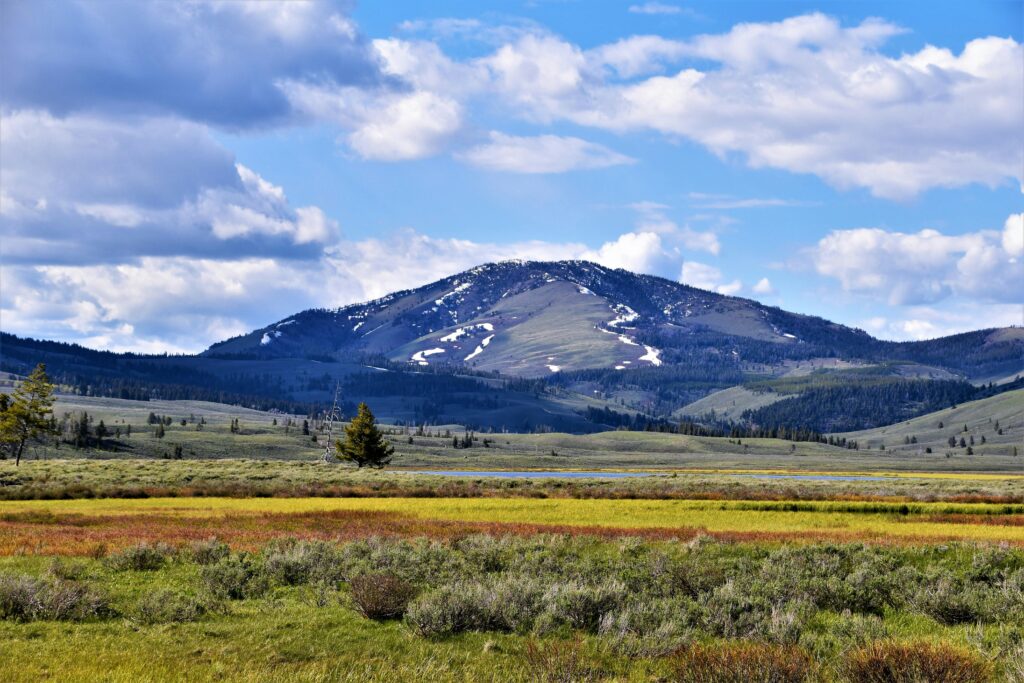
Z: Zanzibar, Tanzania
Green Travel Guide to Zanzibar

Zanzibar, an archipelago off the coast of Tanzania, is a place of natural beauty, cultural richness, and a growing commitment to sustainable tourism. Known for its white-sand beaches, crystal-clear waters, vibrant coral reefs, and historic Stone Town, Zanzibar offers an idyllic setting for eco-conscious travellers who want to experience the best of nature and culture while reducing their environmental impact. As an island destination, Zanzibar faces challenges related to environmental sustainability, but it also offers numerous opportunities for responsible travel and community engagement.
In this Green Travel Destination Guide to Zanzibar, we’ll explore how to enjoy Zanzibar while supporting the local community, protecting the environment, and fostering sustainable tourism practices.
Getting to Zanzibar: Sustainable Travel Options
By Air
The most common way to reach Zanzibar is by air, with flights connecting from major cities in Africa and beyond, including Dar es Salaam, Nairobi, Dubai, and Istanbul. Zanzibar International Airport (ZNZ) serves as the island’s main gateway.
Eco Tip: Choose airlines with carbon offset programs and consider direct flights to reduce your environmental footprint.
By Ferry
For those already in Tanzania, you can travel to Zanzibar by ferry from Dar es Salaam, a 1.5 to 2-hour journey across the Indian Ocean. The ferry is a more sustainable option compared to flying and allows travellers to enjoy a scenic trip across the water.
Eco Tip: Opt for the ferry as a lower-carbon transportation option, and choose operators with environmentally-conscious practices.
Sustainable Transportation on Zanzibar
Once you arrive on Zanzibar, there are several eco-friendly transportation options to explore the island’s natural beauty.
1. Public Transport
Zanzibar has an extensive public bus system that can take you around the island, from the main city of Zanzibar Town to various beaches and villages. Using public transport helps reduce your environmental impact by minimising the number of private cars on the road.
Eco Tip: Opt for local buses instead of private taxis whenever possible to reduce emissions and support local infrastructure.
2. Cycling
Cycling is a great way to explore Zanzibar at a slower pace and with minimal environmental impact. There are several bike rental shops that provide eco-friendly options to help you discover the island’s stunning beaches, lush forests, and historic sites.
Eco Tip: Rent a bike to explore Zanzibar’s beaches and rural areas, reducing your carbon footprint while getting a closer look at local life.
3. Walking
Zanzibar is an island best explored on foot, especially in Stone Town, where narrow streets, alleyways, and historical landmarks make it easy to explore without transportation. Walking is not only sustainable but also gives you a deeper connection to the local culture.
Eco Tip: Walk through Stone Town and along the beach to minimise your impact and experience Zanzibar at a more intimate level.
Sustainable Accommodations in Zanzibar
Zanzibar has a growing number of eco-friendly accommodations, from beachfront resorts to boutique eco-lodges and community-run guesthouses. These accommodations prioritise sustainable building practices, renewable energy, and supporting local economies.
1. Eco-Resorts and Lodges
Several eco-resorts in Zanzibar offer sustainable practices such as solar energy, rainwater harvesting, and locally sourced food. For example, Chumbe Island Coral Park is an eco-lodge that operates on a private island and has a strong focus on environmental preservation, offering eco-tours and sustainable diving experiences.
Eco Tip: Stay at eco-lodges or resorts that emphasise sustainability, renewable energy, and environmental education programs.
2. Community-Based Tourism
Community-based tourism initiatives in Zanzibar focus on supporting local communities by involving them in the tourism process. This allows visitors to engage with Zanzibar’s rich culture and natural resources while directly contributing to the local economy. Local villages offer guesthouse accommodations where profits benefit community development and environmental conservation.
Eco Tip: Choose community-based tourism options that allow you to stay in local villages or homes, providing financial support to local families and ensuring that tourism benefits are shared.
Sustainable Activities in Zanzibar
Zanzibar is renowned for its stunning beaches, crystal-clear waters, and rich cultural heritage. Here are some eco-friendly activities that allow you to enjoy the island’s beauty while minimising your environmental impact.
1. Snorkeling and Diving
Zanzibar’s coral reefs are home to a diverse range of marine life, including sea turtles, dolphins, and colorful fish. Many eco-friendly diving and snorkeling operators in Zanzibar focus on sustainable practices such as reef conservation and marine protection.
Eco Tip: Choose eco-conscious dive operators who emphasise responsible diving and support marine conservation efforts, such as avoiding contact with coral reefs and minimising waste.
2. Spice Tours
Zanzibar is famously known as the “Spice Island,” and a spice tour is a unique way to experience the island’s agricultural practices. Many spice farms operate sustainably, using organic farming techniques and local labor. These tours provide insight into the island’s agricultural heritage and support local farmers.
Eco Tip: Take part in spice tours that focus on organic farming and sustainable practices.
3. Dolphin Watching
Zanzibar is one of the few places where you can see wild dolphins in their natural habitat, particularly off the coast of Kizimkazi. It’s important to choose operators who follow ethical dolphin-watching guidelines to minimise disturbance to the animals and protect their habitat.
Eco Tip: Join a dolphin-watching tour that adheres to responsible guidelines, including maintaining a safe distance from dolphins and supporting local conservation efforts.
4. Forest and Nature Walks
Zanzibar’s Jozani Forest, home to the rare red colobus monkey, offers a chance to experience its diverse ecosystem. Guided nature walks are available to help visitors learn about the local flora and fauna, with an emphasis on conservation and preservation of the forest.
Eco Tip: Take part in guided walks led by knowledgeable local guides who focus on conservation education and protecting local wildlife.
Dining and Sustainable Food Practices
Sustainable food sourcing is an integral part of Zanzibar’s eco-tourism movement. Many restaurants on the island prioritise locally grown produce, fresh seafood, and organic ingredients. Supporting local chefs who use traditional cooking methods and seasonal ingredients can reduce the environmental impact of food transport.
Eco Tip: Dine at restaurants that emphasise locally sourced, organic ingredients and reduce waste by avoiding plastic packaging.
Supporting Local Communities and Conservation in Zanzibar
Zanzibar’s communities and ecosystems depend on responsible tourism to thrive. Here are ways to contribute to the island’s sustainable development efforts:
1. Supporting Conservation Initiatives
Zanzibar is home to several conservation initiatives focused on marine life, wildlife protection, and sustainable agriculture. Some organisations work to protect Zanzibar’s coral reefs, marine species, and forests. Participating in these programs can directly support the preservation of Zanzibar’s natural beauty.
Eco Tip: Donate to or volunteer with local conservation groups or participate in eco-tours that contribute to environmental protection projects.
2. Respecting Local Culture
Respecting Zanzibar’s Islamic culture and local traditions is essential for a responsible travel experience. Learn about local customs, such as modest dress codes, and engage with local communities in a culturally sensitive manner. By supporting local businesses and participating in cultural exchange, you can ensure that your visit has a positive impact on the community.
Eco Tip: Respect local traditions and engage with the community in ways that promote cultural exchange, understanding, and support for local businesses.
Green Travel Tips for Zanzibar
- Minimise waste: Bring reusable water bottles, avoid plastic straws, and reduce disposable plastic use by carrying your own eco-friendly alternatives.
- Travel in small groups: Opt for small-group tours to reduce the environmental footprint and support more personalised, community-led experiences.
- Stay in eco-friendly accommodations: Choose eco-lodges, community-run guesthouses, or resorts that prioritise sustainable practices.
- Choose responsible tours: Participate in tours that emphasise sustainability, whether it’s through wildlife protection, reef conservation, or organic farming.
Zanzibar as an Eco-Destination
Zanzibar offers an exceptional eco-tourism experience where travellers can enjoy breathtaking natural beauty, immerse themselves in local culture, and contribute to sustainable development. By embracing eco-friendly transportation, supporting community-based tourism, and participating in conservation efforts, visitors can have a positive impact on the island’s future while enjoying all that Zanzibar has to offer. Through responsible travel, Zanzibar can continue to thrive as a sustainable paradise.

